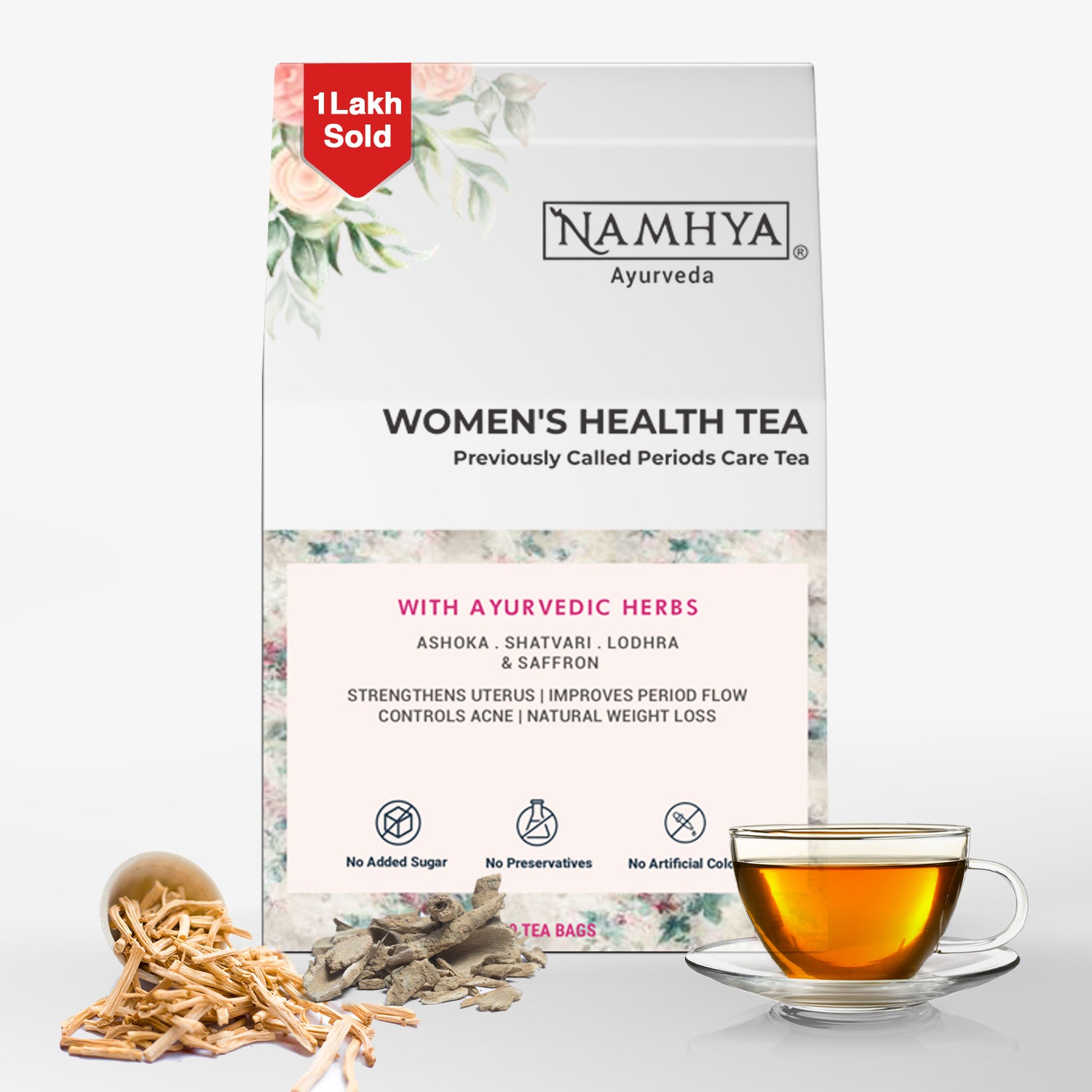Saffron, one of the world's most exotic and therapeutic spices, is called Kesar or Kumkum in India. The scientific name of saffron is Crocus Sativus. Saffron is categorized as a "Varnya Gana" plant in Ayurveda, which gives the skin a healthy glow and improves overall body health. In addition, saffron is considered a 'yogavahi' plant in Ayurveda because of its ability to stimulate the effects of other medicines.
The royal spice, Saffron originally from the Kashmir region of India, has been used for centuries worldwide to provide taste to food, fragrance to the air, and radiance to the skin through cosmetics. In addition, the dried, pungent stigma of the saffron flower is sold commercially for use in Ayurvedic medicine and as a flavorful seasoning. The books of Ayurveda, Unani, Tibetan and Chinese Medicine, among others, all mention (saffron) as an essential medicinal herb.
Some Interesting Facts About Saffron
- Saffron is available in both strand and powder form.
- Saffron is one of the most expensive Ayurvedic medicines because only about 1 gram of dry saffron threads can be made from 150 Crocus sativus flowers. Therefore, one kilogram of flowers must be cultivated in order to produce 12 grams.
- In other terms, Since each flower produces only three stamens, which must be hand-picked and dried, it takes 160 flowers to produce 1 gram of saffron.
-
The chemical component in saffron:
- Approximately 150 phytonutrients provide saffron with its medicinal qualities. In addition, saffron contains several healthy chemicals such as carotenoids, anthocyanins, flavonoids, and terpenoids, which makes it very beneficial for overall health for all age groups.
- Crocin, a carotenoid pigment, is responsible for the spice's yellowish color.
- Picrocrocin, which gives saffron flavor and a bitter (tikta) taste (rasa).
- Safranal is a volatile chemical responsible for saffron's unique fragrance (katu) and odor (pishuna).
Benefits of Saffron

According to Ayurveda, saffron has benefits, including:
- Boosts immunity and Tridoshas
Saffron is considered Tridoshas because it can calm the three Doshas (vata, pitta and kapha). This plant extract's antioxidant, anti-inflammatory, and blood circulation-boosting properties help detoxify the skin and body. Saffron helps the body eliminate impurities and maintains a healthy dosha balance. As it helps to maintain a healthy equilibrium among the three Doshas, this spice is known as Tridoshic.
Saffron has been shown to boost immunity and alleviate common cold symptoms (kasa), cough, and fever. Also, it protects against the flu and other viral infections and helps avoid seasonal diseases.
- Good for the Skin
Saffron is one of the spices traditionally used in Ayurveda to promote a healthy glow to the complexion (kantida). It has powerful antioxidant and anti-melanogenic effects because it raises cellular glutathione levels. Moreover, it aids in the metabolic transformation of carotenes into retinoids (vitamin A). Also, retinoids have been extensively studied for their anti-aging effects, which include improving skin tone.
Additionally, saffron inhibits tyrosinase, the enzyme that synthesizes melanin, and promotes complexion, according to a Critical study of Ayurvedic Varnya plants. This is due to the fact that it contains approximately 150 different forms of carotenoids, including safranal, lycopene, alpha- and beta-carotenes, and zeaxanthin.
- Beneficial in Treating Acne
Acne vulgaris is a skin condition that causes inflammation and is caused by clogged pores. Due to its high phytocompound content, including anti-inflammatory components like crocin and crocetin, saffron can help reduce the inflammation of your acne lesions. In addition, its antibacterial properties treat infections caused by bacteria in the skin's pores, and its antioxidant properties help the skin heal. Furthermore, saffron is a natural inhibitor of melanogenesis. Therefore it also lessens post-inflammatory hyperpigmentation and the incidence of acne scars and blemishes.
Due to its analgesic and anti-inflammatory properties, saffron helps reduce pain, edema, and stiffness. In addition, since saffron has immunomodulatory and antibacterial properties, it can treat painful autoimmune disorders like rheumatoid arthritis.
Saffron's anti-inflammatory properties are due to crocin, making it a viable treatment option for skin conditions, including dermatitis and psoriasis.
- Delays Skin Aging
Skin aging can be accelerated by factors such as exposure to the sun, stress, smoking, and environmental contaminants. These harmful substances can harm the skin by creating free radicals and reactive oxygen species. Slowly but surely, they lead to skin cell damage, collagen breakdown, and a severe loss of lipids. As a result, most anti-aging therapies contain antioxidants, which restore the oxidant-antioxidant balance in your body and reduce skin aging caused by oxidative stress.
Saffron's anti-aging properties come from a group of antioxidant chemicals called apocarotenoids. The list goes on and on, but some examples include kaempferol, safranal, crocin, crocetin, carotene, picrocrocin, etc. This help reduces oxidative stress, stop the formation of wrinkles, and keep skin looking young for a very long time.
- Beneficial For Detoxifying The Blood
Saffron acts as a blood purifier and energizer, improving blood flow and temperature. In addition, saffron has anti-inflammatory properties and can break up clots in the blood. Saffron is different from other blood movers because it cools the blood, while other blood movers warm it. Saffron's anti-inflammatory and antibacterial properties make it an ideal remedy for inflammatory conditions, including arthritis, acne, and hepatitis, all Pitta illnesses caused by blood stagnation. Similarly, honey and saffron can help reduce inflammation and restore breathing during asthma attacks.
- Beneficial to Reproductive Health
For centuries, saffron has been regarded for its powerful aphrodisiac effects. Men and women of both sexes can improve their libido by mixing saffron with milk. It also helps treat infertility and age-related sexual dysfunction in both men and women, making it the most effective herb for infertility and age-related sexual dysfunction. In addition, saffron's galactagogue and postpartum contraction/healing effects make it one of the most favored herbs for its ability to stimulate the production of oxytocin, the "tend and befriend" hormone.
Saffron is beneficial for females experiencing menstruation (emmenagogue) issues, including cramping or irregular bleeding. In addition, it's beneficial for alleviating PMS symptoms, balancing hormones, and regulating cycles. Endometriosis is a disorder in which tissue identical to the uterine lining begins to develop in unnatural sites, such as the fallopian tubes and ovaries. There is some evidence that saffron can prevent Endometriosis.
Like most oxytocic herbs, saffron is an abortifacient and should not be consumed excessively during pregnancy.
- Beneficial Effects On The Brain's Health
The B vitamins and carotenoids in saffron help maintain normal levels of serotonin and other mood-regulating neurotransmitters in the brain.
According to recent clinical studies, Saffron's therapeutic properties extend to the central nervous system and the brain. For example, in mild to severe depression, two main components, safranal and crocin may have an anti-depressant effect. In addition, these two compounds have enhanced memory and learning, emphasizing their potential application in treating neurodegenerative illnesses.
Application Of Saffron In Everyday Life
- Saffron is used in sweet and savory cuisines. It adds a nice touch of decoration to any dish. Saffron threads are usually soaked in milk before being added to meals. Saffron is used to season grains, vegetables, and sweets in Ayurveda. It is also often used in northern Indian Mughlai cuisine.
- Saffron is used for its rich color as well as for its delicate fragrance, which is widely used in many commercial perfumes.
- Saffron is used not only as a decorative spice on many South Asian and Indian dishes but also as a religious offering to the gods in Hindu culture.
Conclusion
Saffron has been hailed as one of the most valuable commodities for thousands of years due to its exquisite flavor, vibrant color (when used as a coloring), and therapeutic properties. Saffron is safe at moderate dosages. To avoid contaminated saffron, buy from a trusted brand.


